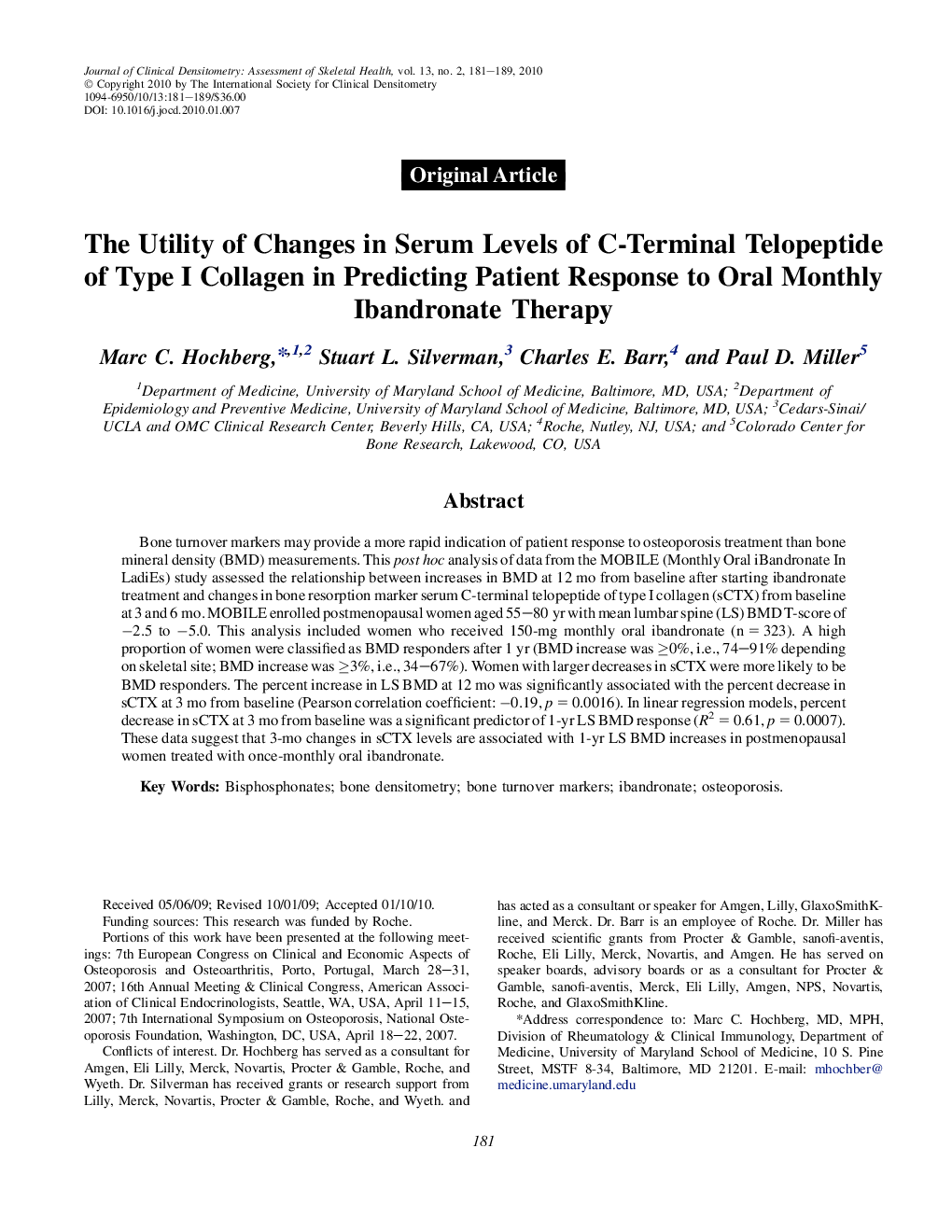| Article ID | Journal | Published Year | Pages | File Type |
|---|---|---|---|---|
| 3271285 | Journal of Clinical Densitometry | 2010 | 9 Pages |
Abstract
Bone turnover markers may provide a more rapid indication of patient response to osteoporosis treatment than bone mineral density (BMD) measurements. This post hoc analysis of data from the MOBILE (Monthly Oral iBandronate In LadiEs) study assessed the relationship between increases in BMD at 12 mo from baseline after starting ibandronate treatment and changes in bone resorption marker serum C-terminal telopeptide of type I collagen (sCTX) from baseline at 3 and 6 mo. MOBILE enrolled postmenopausal women aged 55-80 yr with mean lumbar spine (LS) BMD T-score of â2.5 to â5.0. This analysis included women who received 150-mg monthly oral ibandronate (n = 323). A high proportion of women were classified as BMD responders after 1 yr (BMD increase was â¥0%, i.e., 74-91% depending on skeletal site; BMD increase was â¥3%, i.e., 34-67%). Women with larger decreases in sCTX were more likely to be BMD responders. The percent increase in LS BMD at 12 mo was significantly associated with the percent decrease in sCTX at 3 mo from baseline (Pearson correlation coefficient: â0.19, p = 0.0016). In linear regression models, percent decrease in sCTX at 3 mo from baseline was a significant predictor of 1-yr LS BMD response (R2 = 0.61, p = 0.0007). These data suggest that 3-mo changes in sCTX levels are associated with 1-yr LS BMD increases in postmenopausal women treated with once-monthly oral ibandronate.
Related Topics
Health Sciences
Medicine and Dentistry
Endocrinology, Diabetes and Metabolism
Authors
Marc C. Hochberg, Stuart L. Silverman, Charles E. Barr, Paul D. Miller,
